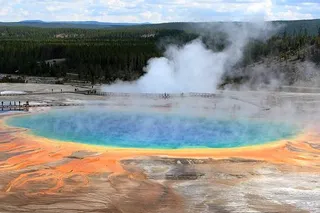Some of the first creatures to walk on land looked like meter-long salamanders; but they weren’t, at least not quite yet. They had teeth specialized in tearing flesh similar to a monitor lizard today; but they weren’t that either, yet. Their limbs could have seven or eight digits, depending on the species. And their eyes sat roughly on the top of their heads, perhaps to get a better glimpse of the terrestrial possibilities just beyond the water, where they likely spent much of their time.
Acanthostega and Ichthyostega represent the most complete surviving fossils we have discovered of the earliest tetrapods, a group whose descendants would be the first vertebrate creatures to leave the oceans and walk on land. Tetrapods like these and their descendants would go on to have a successful run of the planet for the next 365 million years, diversifying along the way into animals that can ...















